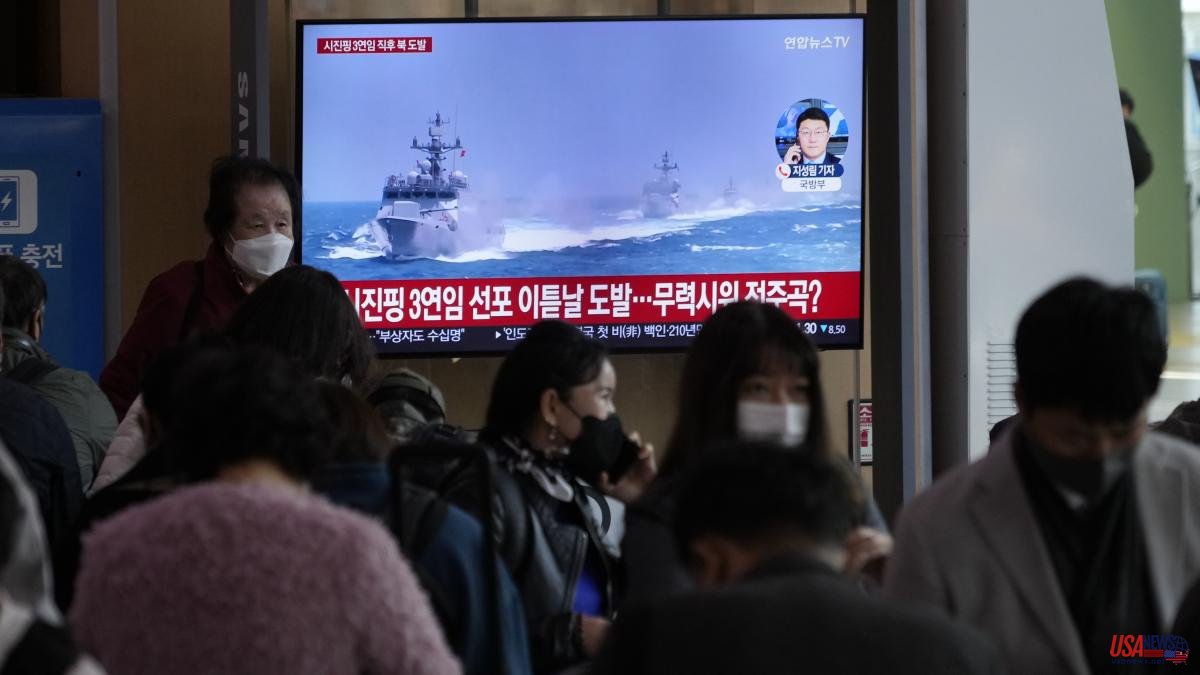The calm between the two Koreas has lasted as long as the Communist Party congress in neighboring China. After that week of regional truce, which ended yesterday with the renewal of Xi Jinping for a third term and the reorganization of the Chinese leadership, both neighboring nations recovered the dialectic of military confrontation in a entrenched conflict whose tension is increasing.
The latest clash took place during the early hours of this Monday (local time), when a North Korean merchant ship crossed the maritime border that is disputed with its southern neighbor, known as the Northern Limit Line (LLN). Faced with this advance, a South Korean patrol boat responded with several warning shots.
“At around 03:42 (18:42 GMT on Sunday), a North Korean merchant vessel invaded the Northern Limit Line about 27 kilometers northeast of Baengnyeong Island (...) and the South Korean military took measures for its evacuation. through messages and emergency fire," reported the southern Joint Chiefs of Staff (JCS).
About 90 minutes later, Pyongyang fired its own barrage into the sea from the mainland, considering the patrol boat had invaded North Korean waters. "Korean People's Army coastal defense units on the Western Front took an initial countermeasure to drive off the enemy warship by firing 10 shells from multiple rocket launchers into territorial waters, where enemy naval movement was detected," the statement said.
The NLL was drawn up at the end of the Korean War in 1953 by the US-led UN command, but Pyongyang does not recognize it and has been the scene of skirmishes and fighting that have left both sides dead in different altercations.
Seoul stressed that these North artillery launches violate the 2018 inter-Korean agreement for the reduction of tensions in the area and called for the "repeated provocations" that "damage peace and stability" to cease "immediately".
Later, the South Korean Navy announced the start of "large-scale" maneuvers that will last until Thursday the 27th in the waters of the Yellow Sea, the scene of the latest confrontation. Along with its troops, US troops will be present, in an exercise that "works as preparation for enemy provocations," its statement detailed.
As detailed, some 20 South Korean navy ships will participate in these maneuvers around the LLN - including frigates or destroyers equipped with the Aegis missile system, coast guard vessels or F-15 and F-16 fighters - and Apache helicopters. or American A-10 attack planes.
The tension in the region is bordering on the levels reached in 2017, when Pyongyang successfully tested its intercontinental ballistic missiles and carried out its last atomic test to date.
So far this year, the Kim Jong Un regime has carried out more than 40 missile tests, most of them ballistic and prohibited by the sanctions imposed by the UN Security Council. After the most recent launches, the dictator said that they were “tactical nuclear exercises”, and threatened that his forces were ready to destroy targets at any time and from any place.
For their part, Seoul and Washington have strengthened their alliance with a significant increase in the number and intensity of their joint military exercises, which recently included the deployment of an American aircraft carrier.
With the Chinese congress already over, many analysts now expect Pyongyang to carry out a new atomic test for which, according to satellite and intelligence data, it has been preparing in recent months.













